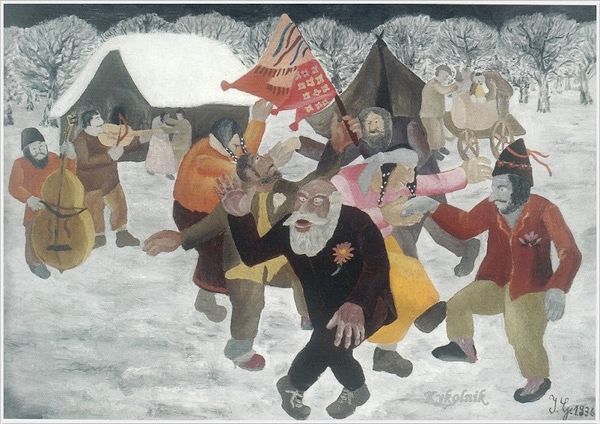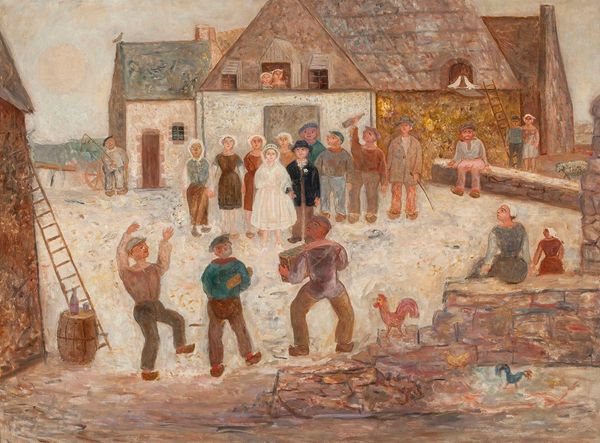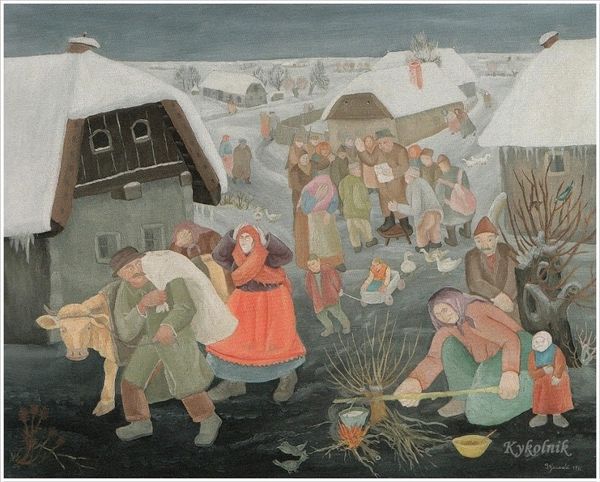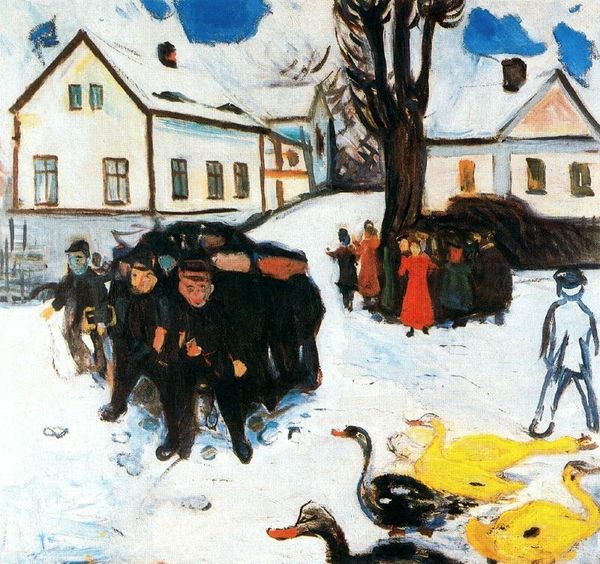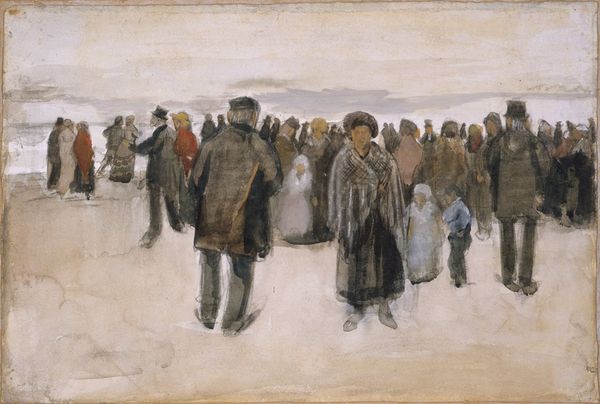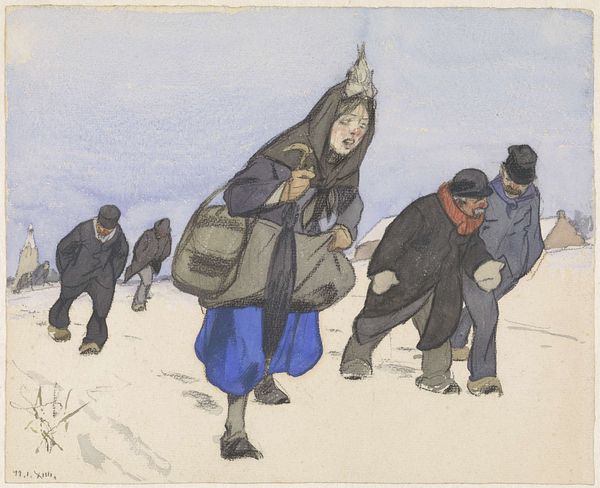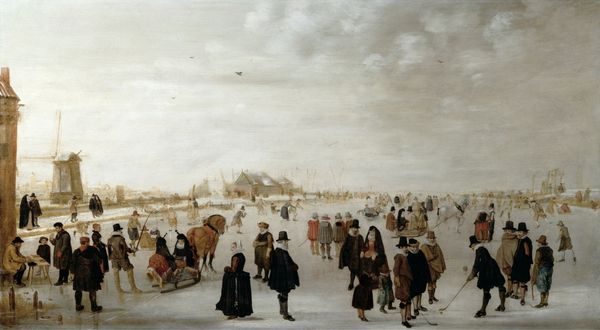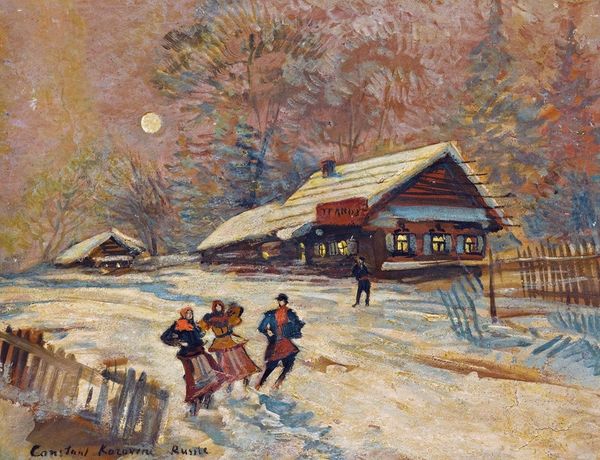
painting, oil-paint
#
painting
#
oil-paint
#
landscape
#
social-realism
#
oil painting
#
genre-painting
#
history-painting
Copyright: Ivan Generalic,Fair Use
Curator: Standing before us is Ivan Generalic's 1936 oil on canvas, "Djelekovec Rebellion." Editor: What strikes me immediately is the chaotic energy. A scene of upheaval painted with muted tones—the snowy landscape lends an almost surreal calmness to the raucous action. Curator: This is an example of Social Realism, emerging at a time of heightened class consciousness. What we're witnessing is less a generalized "rebellion" and more a depiction of peasant resistance against socioeconomic injustice. Generalic himself came from a peasant background, making the work resonate with his personal history and the struggles of his community. Editor: There's a real earthy symbolism here. The figures are almost archetypal, their crude features emphasizing their connection to the land. Even the pig near the lower right becomes a loaded image. In folklore, pigs often signify both abundance and vulgarity; in this context, is it meant to represent the resources at stake or something more demeaning? Curator: It’s more than just about resources—it encapsulates a fight against systemic oppression. Notice the faceless uniformity of the figures; they become a symbol of the collective struggle against powers beyond their immediate control. They operate as an undifferentiated mob; the composition rejects traditional notions of individual heroism and is all about solidarity against powerful hierarchies. Editor: Absolutely, the absence of discernible individual heroes contributes to that communal struggle. The church in the background, though diminutive, still seems looming; do you think the implied criticism of the Church serves to expose complicity with social order? Curator: That interpretation is likely valid, and this artwork becomes more poignant when considering that many members of the clergy supported existing social structures that exacerbated the divide. It's not just social realism—there is a definite subversive social commentary, very courageous for its time. Editor: It is thought-provoking. The imagery is both blunt and brimming with underlying significance. I keep pondering over these recurring images – the village, the snow, the frenzied mob, and their combined weight and implication on memory. Curator: Reflecting on the context allows us to see it as more than just a historical event. It’s about collective empowerment, resistance to marginalization, and solidarity across class lines – themes that remain pertinent even now.
Comments
No comments
Be the first to comment and join the conversation on the ultimate creative platform.

